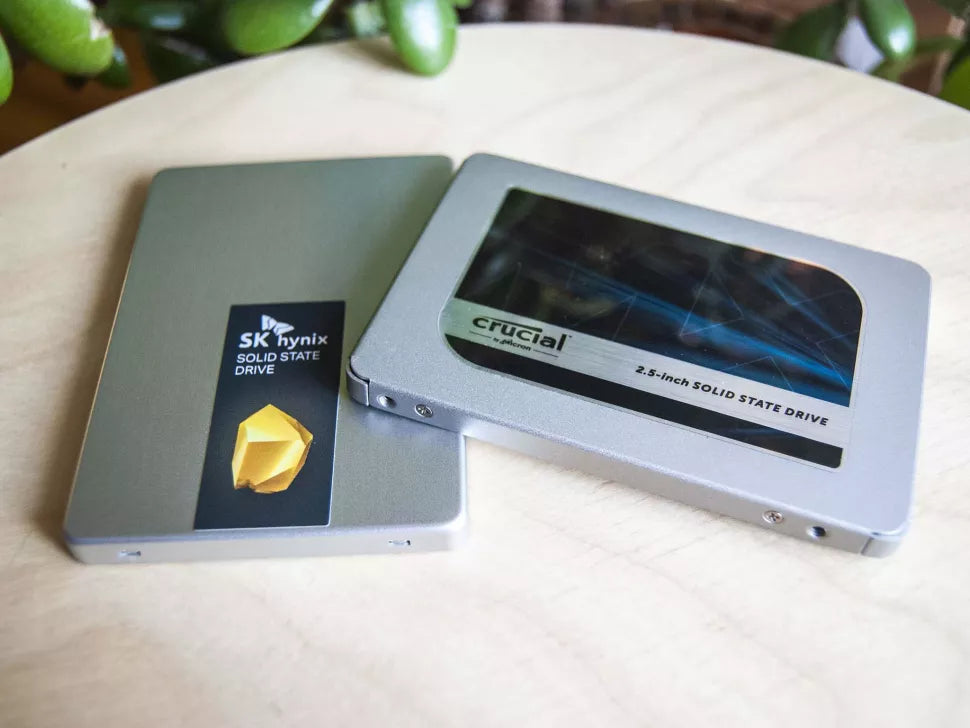
SSD and eMMC – What’s the Difference?
SSD and eMMC – What’s the Difference?
There are many similarities between an eMMC and an SSD. As both are quick, provide reliable storage and boot performance, they help your system function by giving you greater data access speeds than mechanical hard disk drive technology. There are also many differences between the two. Our goal is to inform you about each and help you decide which device makes sense for your needs. First let’s define each.
What is a SSD?
An SSD (Solid State Drive) is a small chipset that has no spinning disk like its predecessor, the HDD (Hard Disk Drive). An SSD can be removed and is mainly used in newer computers today, which uses flash-based memory that is much faster than the HDD. SSD storage can range from 16GB to 2TB+, and manufacturers are continuing to push performance and storage capacity upwards. An SSD is great for large amounts of data, big programs, and provides a lot of storage space that will continue to run quickly making them great for gaming, business and servers. The SSD is also good for everyday use like surfing the web and checking emails especially if you often have multiple pages and documents open at the same time.
What is an eMMC?
An eMMC (embedded Multi-Media Card) is a small chipset, close to the size of a penny. The eMMC is used in multiple devices, like smartphones, smart TVs, smart watches, and entry level or specific use laptops. This device is usually soldered onto the motherboard, unlike an SSD and an HDD that can be removed. These storage devices are typically for low storage uses, like photos, small documents, and programs that don’t take up much space. The most common eMMC come in 8GB to 128GB+ of storage. However, there are eMMC out there that reach up to 512GB+ of storage.
Comparing eMMC and SSD.
Both drives have benefits and each have their own unique purposes and functions for what you want to do with your computer. Here are a few key features of each eMMC and SSD, to compare them both in order to decide what is best for you.
eMMC:
- eMMC storage can usually range from 8GB to 128GB+.
- It is soldered to the board, which makes it difficult to replace.
- eMMC is slower compared to SSD, but faster than HDD.
- eMMC can be found in mobile devices, TVs, entry level laptops, etc.
- Commonly used for surfing the web and email.
- Data transfer speeds up to 400MB/s.
- Can be more affordable system.
SSD:
- SSD storage can range from 16GB to 2TB+, which continues to grow.
- It can be easily upgraded or replaced if damaged.
- It is faster than an eMMC.
- Can be found in newer laptops and PCs.
- Commonly used in servers, gaming, and business computers, for speed and storage capacity.
- Data transfer speeds up to 600 MB/s for a SATA SSD.
- Can cost more than an eMMC.
- Has a longer life-span than an eMMC.
Conclusion
SSDs and eMMCs have their own benefits. An eMMC is typically used in specific hardware or for light computing use and smaller applications like web surfing and email. An SSD is used in computers and hardware for intensive computing uses like gaming, graphic marketing, video editing and larger data demanding applications.
Thanks for reading and hope you enjoyed this post. Please let us know what other topics you’d like us to cover.



